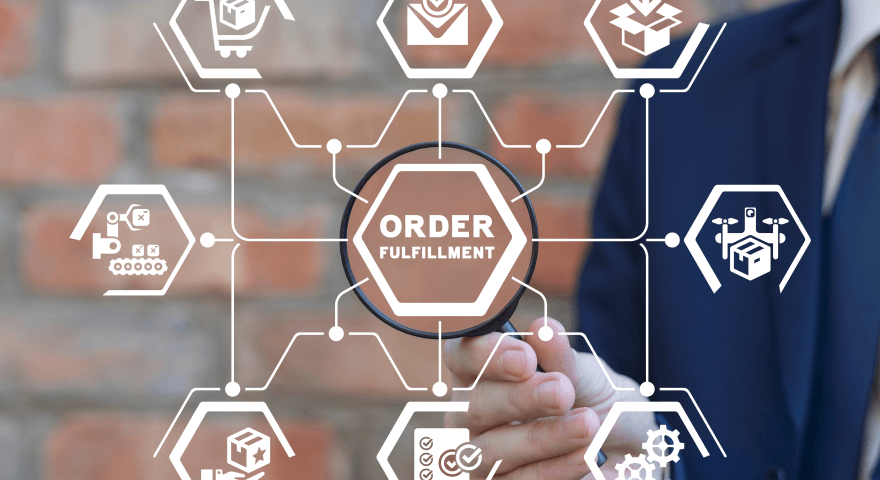Supply chain optimization is crucial in an increasingly globalized competitive world where margins are under constant pressure. In the recent decade, most of the attention in supply chain design has been on maximizing resource utilization, offshoring to lower-cost regions, outsourcing non-value added operations, implementing just-in-time systems, and investing in communication technologies. With the rapid expansion of the economy and technology, business competition has morphed into supply chain competition. Supply chain management has sparked public concern due to the frequency and severity of terrorist attacks, pandemics, hurricanes, and other disasters, resulting in lower production, higher costs, rising customer dissatisfaction, and much more.
While these new business paradigms have resulted in more efficient and responsive systems, they have drastically transformed the supply chain risk profile. Due to weak risk management systems, many businesses have been left susceptible, which have given way to substantial shifts in demand or supply caused by unexpected natural and man-made disasters. For instance, a labor dispute may be predicted, whereas a terrorist attack is unpredictable. Further, the time it takes to feel the impact varies and is unique to each disruption and firm. For example, a fire in a plant may halt operations immediately. In contrast, an epidemic in a supply zone could have a more subtle influence and take longer to set in. companies with a robust supply chain will be able to predict these events better than their competitors. They will be able to delay and mitigate the disruption's impact by employing proactive risk-mitigating measures.
Companies should be flexible enough to quickly adapt their operation scenarios to compensate for vulnerabilities while focusing on efficiency and responsiveness in traditional "business-as-usual" environments. A disaster-proofing strategy based on situations and concentrate on the effects of interruptions will not only reduce harm to the bottom line, but it may even help the company gain an advantage over their competitors. Supply-chain disruptions happen more frequently than most companies expect, and the impact of these disruptions is growing. Organizations prepare as if catastrophic or "black swan" incidents happen once in a generation. In contrast, these types of disruptions happen every two or three years in reality, and these disruptions hurt operations. These occurrences can raise raw material prices, complicate shipment, lengthen customer lead times, and increase supplier risk. Although any firm can be affected by these factors, some are more vulnerable than others. Therefore, the scale of these risk scenarios will be amplified if organizations are unprepared to negotiate disruptions.The majority of supply-chain vulnerabilities require firms to first focus on short-term supply-chain repair. However, while they analyze the supply chain across three horizons, they must also keep long-term strategic thinking in mind:
- Restore: Focus on restoring supply-chain operations as soon as possible, collaborating transparently with customers and suppliers, and restoring cash flow.
- Rethink: Examine and assess the capabilities needed to support future supply-chain operations while maintaining a balance of cost-effectiveness, customer service, and operational resiliency.
- Redesign: Focus on next-generation capabilities and relationships while designing future commercial and operating models.
These horizons ensure that companies have the resources they need to deal with current problems and restore supply chain operations while also positioning themselves for long-term success.Here are some measures to be taken at the time of supply chain disruption:
- Emergency plan: What happens if a supplier loses power in the middle of a snowstorm? There are many "what if" scenarios, and even though many of them seem unlikely to happen, it's still a good idea to have a backup plan in place. Alternate routes, nearby suppliers, and various shipping and inventory choices can help alleviate the stress of being in the thick of an unforeseen crisis.
- End-to-end visibility: Knowing every piece of your supply chain, as well as the contingency plans in place from your suppliers, will help you prepare ahead and respond appropriately when a disruption happens.
- Create open lines of communication: Many things must be done during a crisis. One of them is keeping everyone on the same page. Let your staff know if you need to reprioritize your operations in-house temporarily. If you need to outsource the work because you're overburdened, find a new supplier right away.
- Supply chain vulnerability audit: Mistakes are bound to occur. It is impossible to avoid every circumstance. If the problem was unforeseen and unaccounted for, it might be time to do a vulnerability audit. Though it may require some time away from your everyday activities, it is the first step toward anticipating potential surprises. You should consider whether your solution is worth reproducing or if there is a better approach.
- Document response procedures: It may go without saying, but make sure to update your emergency plan after your vulnerability audit: document the problem and its solution for future reference.
Companies must begin rebuilding, rethinking, and restructuring supply systems now to prepare for the next crisis. Consumers will want higher levels of service and faster delivery in the future. To be competitive and withstand supply-chain vulnerability in the future, organizations will need to be more adaptable and work with speed and accuracy.





.jpg)



.png)
